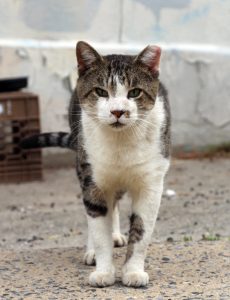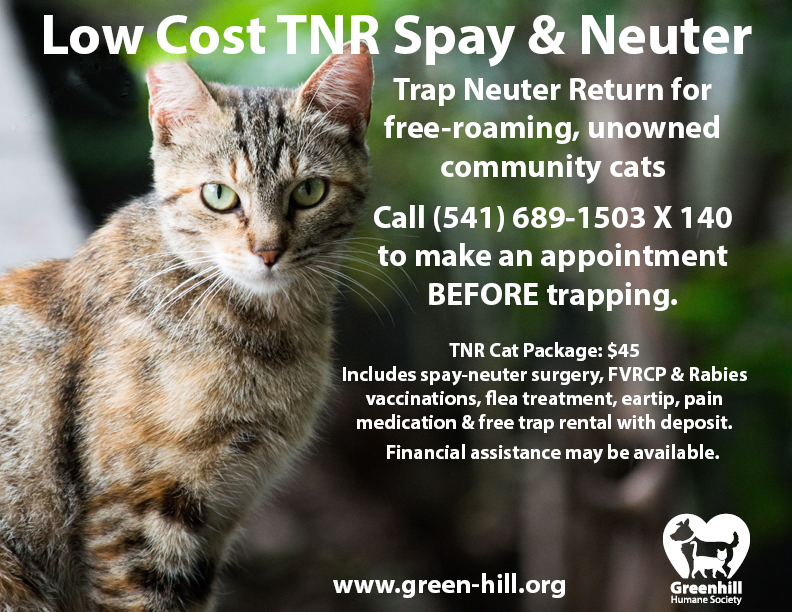Outdoor and Community Cats
An informational page about outdoor and community cats with helpful tips about living with cats in your neighborhood.
What is a Community Cat?
Lane County is home to many “community cats.” These are outdoor, unowned, free-roaming cats. They can be friendly or skittish, young or old, altered or unaltered. They may or may not have a caregiver. These cats can live individually or they might live in colonies.
Community cats can often be unaltered, leading to rapid population growth and spreading disease. Greenhill offers programs to help spay/neuter and vaccinate community and outdoor cats.

Why it's best to leave healthy cats where they are...
If an outdoor cat looks healthy or uninjured, it’s best to leave them where they are. Removing an outdoor cat from their environment could separate them from their owner or caretaker. If the cat is a part of a larger colony, removing them could create a “vacuum effect” in which other cats may move into the territory and continue to breed. You can read more about the vacuum here, Alleycat.org/VacuumEffect
What if the cat may be lost?
Surveys show that up to 2/3 of cat owners allow their pet cats to have outdoor access, so that healthy, “stray” cat you found may be exactly where they are meant to be! Even if they did wind up outdoors by accident, surveys also find that 75% of lost pet cats that are reunited with their owners are found within 500 meters (or appx. 5 blocks) of their homes, so it’s best to look for a cat’s owner near where you found the cat or leave it where it is to find its way home, rather than relocating it to a shelter or other location. If you feel that you have found a lost cat, our Lost and Found page has some helpful tips for trying to reunite the cat with it’s owner.
What if the cat appears to be ill or injured?
If you feel the cat is critically injured and in need of immediate emergency medical care, consider taking the cat to the nearest veterinary clinic. You may be responsible for the cost of care, if an owner cannot be located. The veterinarian will scan the cat for a microchip to try to find an owner. Click here for a list of local veterinary clinics. If you are unable to take the cat to a veterinarian, contact the local animal control agency for your area, Click here for a list of local animal control agencies. If animal control is unable to assist, contact Greenhill’s Feline Receiving Department at 541-689-1503 x133.
In Lane County, it is legal to trap or take an outdoor unowned cat to provide spay/neuter or other medical care as long as the cat is returned to the same place you took it from.

Greenhill's programs for outdoor cats
Greenhill offers two programs for community cats that are in need of spay/neuter. See below for details about each program.
TNR Program (for cats in colonies for 20+)
Contact 541-689-1503 x 140 or tnr@green-hill.org
SNR Program (for individual cats or in a group of less than 20)
Contact 541-689-1503 x 133 or email felinereceiving@green-hill.org
How to live with cats in your neighborhood
We understand that living with outdoor cats in your neighborhood can sometimes be a burden. Below is a link to a great resource from Alley Cat Allies about how to live with cats in your neighborhood. The resource has some good advice for how to handle nuisance behaviors.
Alley Cat Allies – How to live with cats in your neighborhood
Ways you can support outdoor cats
There are many ways you can join Greenhill to support outdoor and community cats in your area. You can make a donation to support the TNR/SNR programs, you can enroll in our TNR program to trap/transport cats for surgery, or you can become a volunteer with us.








